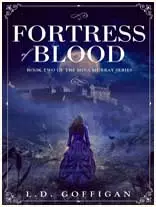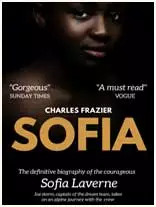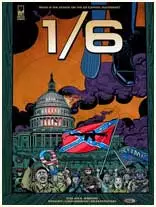Complete Guide To The Art And Writing Of Biography

Biography writing is the most beautiful endeavor of an individual. It takes a lot of thought processes and gut instincts to express astonishingly defining moments of their lives. Are you one of those people who also want to enlist themselves amongst the great storytellers to inspire and aspire? Today's hottest news is that you're at the right place at the right time, as we will be discussing the art and the writing process behind a biography.
Abstract – Purpose
First and foremost, a biography simply covers one's life accounts; there are, however, myriad reasons and purposes behind biography writing, each with a distinctive course of action. Some authors want to share their take by offering readers all the detailed insights into a subject’s life through the author’s lens, while others may just want to inspire by highlighting the subject's resilience into a piece of writing to sculpt a motivational example for readers all around the globe.
Furthermore, biographies can differ from each other, as there are commonly known types out there, for example, autobiographies, where individuals jot down their own experiences via first-person perspective, to interestingly beautiful remembrance of particular memorials through memoirs that focus on specific life events to exhibit its essence with the help of well-written narratives.
Fundamentals of Biography Writing
For a moment, place yourself into the shoes of a great storyteller, and just imagine painting vivid imagery with the language and artfully crafting a personal story as if it's straight out of a captivating novel. Dear reader friend, it's all possible, and there's no rocket science behind it. Nonetheless, it requires planning, conception, and execution, which could be enough to help you comprehend what goes on behind biography writing.
Basics of Writing a Highly Engaging Biography
Let us elaborate on some leading elements of biographies that make them engaging and interesting all at the same time:
Know Your Subject Deeply:
Research, pinpoint, and note down the values and motivation of the person you're going to write about. Dissect not just their actions but the motivations behind their actions. This depth is required to carry authenticity and help draw readers in.
Build a Compelling Narrative:
Besides listing all the events of your subject's life, aim to tell a story because biography is the fascinating blend of actual events and a subtle element of smartly chosen essential subtle fictitious characteristics to make the reader care about the subject; that's why biography writing often resides within the spectrum of creative nonfiction.
Highlight Only the Key Moments:
The most crucial aspect of biography writing is that you don't have to pen down everything; you just need to focus on the key moments of your subject's life. Moreover, you may use such moments to shape the entire chronicle to elevate the stakes while also creatively putting effort into incorporating some enhanced and logical notions.
Honest Balance for Maximum Impact:
While you may dramatize aspects of the story to some extent, be sure to present the subject with honesty, and that should also include its flaws in order to spark some space into the character development. By balancing facts this way, you can craft a well-rounded portrayal that can easily build trust with readers to exhibit an overall relatable reading experience.
By following these basic fundamentals, you can turn life stories into something remarkable, and this is not written just to add a flair of a catchphrase or any attempt to sell you something but to help you understand that it's all possible. If you plan out things, focus on prewriting preparations, and choose the right verbiage, you can achieve the goal of crafting a compelling biography right away.
Organize the Plotline
Besides understanding the fundamentals, there is one most important thing to understand, which is to practice the essentials of biography. Firstly, know the rules before you aspire to break them. The biggest core is the traditional plotline rule. Ensure to organize your subject's life turn of events into coherence. Aim to go for the introduction, progression, challenges, and resolution that should contain excitement with proper pacing.
Pro-Tip:
You can opt for mapping out the attained details of the subject's life with color coding, be it a digital document or a fancy sticky note around the workspace, because this creative visual approach will allow you to see the entire life story at a single glance, keeping things easy to connect the dots and making the overall task more organized. Apart from making your task look fancy, you also need to ensure that the results, too; in order to achieve polished writing results, you can learn and implement different types of editing techniques at your disposal.
Let’s Explore Further Details About Plotline:
Exposition:
In this phase, you will introduce the reader to the core concept and write crucial details regarding the background information to set the stage for what readers can expect.
Actions:
Aim to escalate some actions into a series of events to build significant moments or the turning point in the subject's life. This may involve describing the motivations, the reason behind those motivations, and the complexity of the cause for what the subject stands for. Even if real life is all-good vibes, make sure to incorporate some actions with a purpose behind them.
Climax:
Climax, indeed, is the most important high-point of the narrative; you can elevate conflict here to reach its peak in order to pave the way for the final crucial moment in the subject's life to unfold. This leads us to the falling action, which subsides the tension right after the climax.
Resolution:
This is where you will gear up the story's conclusion to paint the closure along with the lessons or any message that your subject wants to convey.
Don't overlook the setting; time, place, and overall environment are the essential elements to help create the backdrop that helps the reader engage in the subject's world. These elements can glue the entire plotline by adding layers of depth and emotions. That being said, dialogue plays a vital role in bringing the story to life, with conversations that shape the notions throughout the story. Overall, the plot needs to be unfolded in proper order, as we mentioned earlier; it begins with the exposition and concludes with a well-thought-of resolution.
Rules to Follow When Writing Biography:
By gaining all the information shared in this blog you have read till now, you must have already guessed many things regarding biography, but now let us talk about things that are important to understand.
It applies to you that you have to secure permission before writing about anyone; if the person about whom you want to write has passed away, then you have to get permission from their family members, and if that person is still well and living, ask directly to the person because if you write something about someone without securing the rightful permission, then this can be considered an unethical act of conduct. The other thing that is most important is taking feedback, as it can be beneficial for you, be it from beta readers, common people, or even the editorial team. Good feedback can give you an overview on the basis of which you can correct any remaining flaws or loopholes in your writing.
As for the individuals who want to get their biography written and are also looking to publish an eBook based on their history, opting for an affordable ghostwriting service can be handy as it smartly saves time and enables such individuals to be at ease without worrying about the results as such services often take cares of all the writing facets.
limited Time offer
- 00
- 00
- 2





